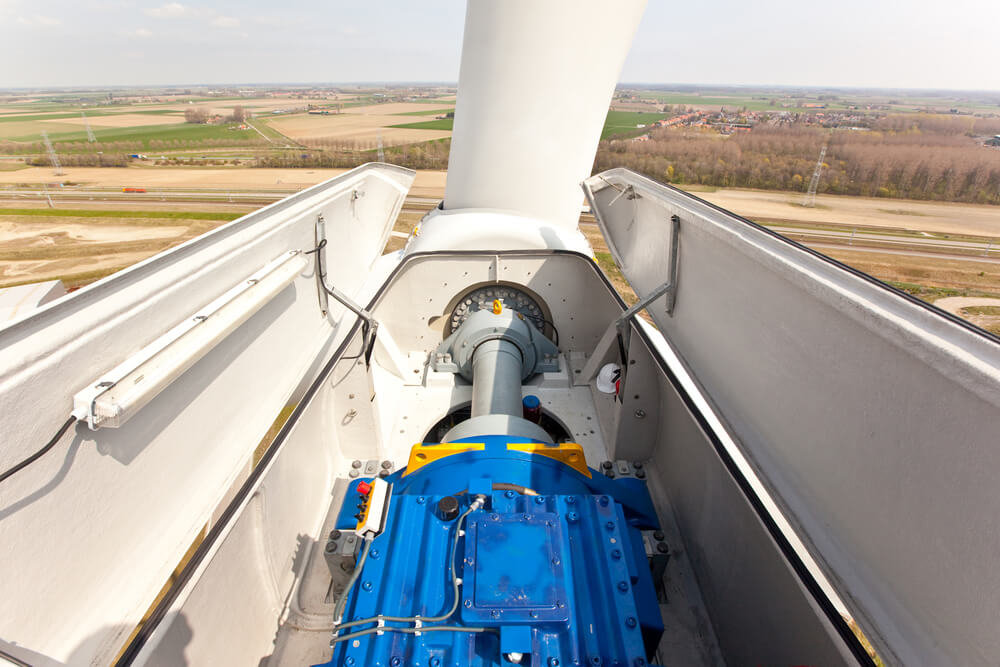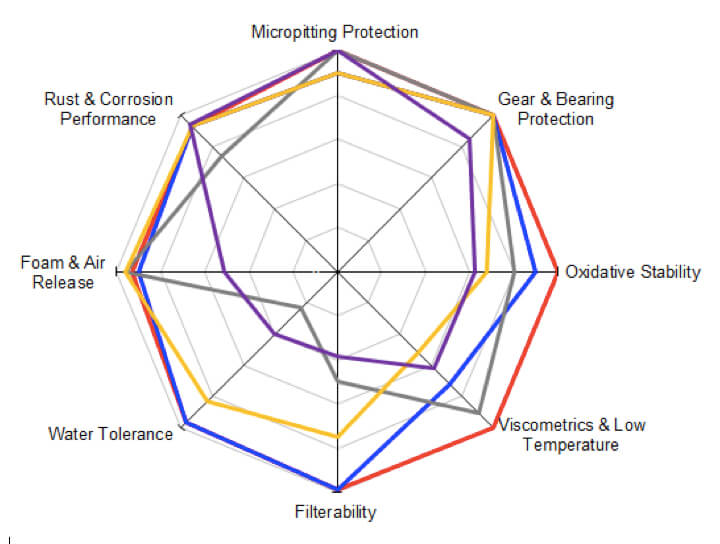
A high-quality, balanced lubricant can help protect wind-turbine components and reduce maintenance costs by extending oil-drain intervals and minimizing equipment downtime. (Photo: ExxonMobil)
Quality components are integral to a high-performing wind farm, and ongoing care and maintenance of its parts is just as important. Turbines are exposed to some of the harshest conditions in the industrial world, such as extreme temperatures, vibration, and debris. In these conditions, proper equipment lubrication is essential. It can help protect system components, minimize unscheduled downtime, reduce costs, extend oil-drain intervals, and enhance safety through reduced human-machine interaction.
To this end, the wind industry is continually seeking advances in oil and lubrication aimed at increased turbine efficiency. For example, it is now generally accepted that synthetic gear oils (over conventional mineral-based oils) offer more protection from common gearbox failure modes including micropitting, which results in reduced gear-tooth accuracy, and bearing wear. But how turbine oils are maintained and treated over time is also an important consideration for long-term performance and equipment protection.
“If you’ve been following wind-turbine equipment maintenance trends, you may have heard some chatter about top-treating turbine gearbox oils with additives as a strategy to mitigate lubricant degradation and extend oil life,” says Gary Hennigan, a National Account Executive at ExxonMobil. To top treat oil, turbine operators use condition monitoring to identify when an oil’s additives start to deplete and then “re-additize” that oil with the addition of after-market additive packages. “While it’s important to identify opportunities to optimize oil life and equipment reliability, relying on additive top treating as part of your primary lubrication strategy is not a recommended long-term maintenance strategy,” he says.
The reason? Top treating may introduce new contaminants to oil, which can alter the balance of the lubricant’s formulation and, subsequently, impact turbine performance. “Surface-active additives, such as anti-wear additives and rust inhibitors, compete for space on the metal surfaces in a gearbox,” explains Hennigan. “It is a delicate balance to formulate an oil so that both of these additives are present in correct amounts to adequately protect a machine’s elements from wear and rust. Top treating can lead to different ratios or different types of these additives, which can disturb the intended balance of the formulation.”

The diagram compares the performance of different wind-turbine gearbox oils. The red line represents the performance benefits that a high-quality synthetic oil with a balanced formulation can deliver, especially in the key areas of oxidative stability and filterability.
An often-overlooked component of top treating oils with additives is that it can lead to safety challenges, points out Hennigan. “Every time you top treat, you’re interacting with equipment. And, more frequent equipment interaction increases the potential for safety issues.” After all, for every maintenance check or oil change, a wind technician must climb up-tower and risk exposure to heights and a high-powered machine.
For Hennigan, these risks far outweigh the benefits of a quick-fix maintenance plan. “Instead, the key to long-term lubricant performance is to start with a well-formulated oil that can perform at a high level over many years without need for additive top treating.” This means choosing an oil formulation with the right mix of advanced base oils and additives. Of course, many factors can impact this choice and oil life in service, such as a turbine’s typical operating conditions, severe environmental conditions, and overall maintenance practices.
“But to provide turbine operators with a sense of baseline performance, some of our synthetic wind-turbine oils are warrantied for up to seven years, demonstrating the capability for the fluid to protect the machine even after 60,000 hours in service,” he says.
The bottom line: oils with a balanced formulation will last longer, in some cases years longer, so top treating will be a waste of time. “With the right formula, you will not need to top treat the oil to deliver the expected level of performance,” says Hennigan. “Most importantly, it will result in less frequent equipment interaction, improved operational safety, as well as minimized risk of accidentally introducing insoluble contaminants into your lubricants when conducting a top-treat service.”
Filed Under: Lubricants, News, O&M




